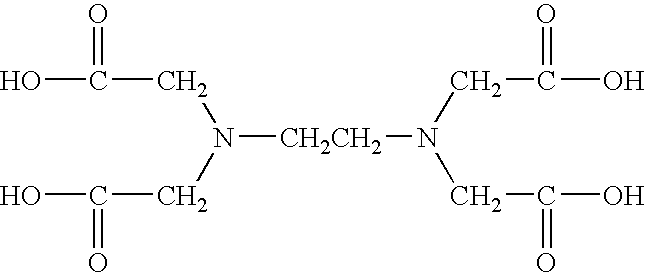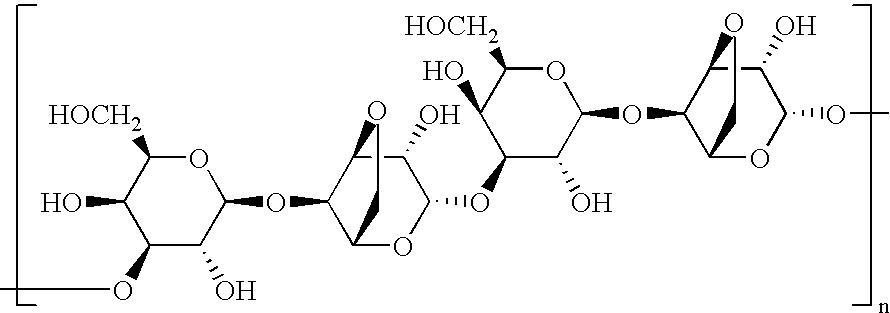Isolation, characterization, cloning and use of a mushroom lectin
a technology of lectin and mushroom, which is applied in the field of carbohydrate binding proteins, can solve the problems of ineffective binding to this epitope, and achieve the effects of blocking the transplant rejection of porcine tissue, preventing the onset of toxin a symptoms, and preventing the onset of toxin a
- Summary
- Abstract
- Description
- Claims
- Application Information
AI Technical Summary
Benefits of technology
Problems solved by technology
Method used
Image
Examples
example 1
[0173]This example presents the original extraction, isolation and purification procedure used to purify MOA from M. oreades. Using this procedure, three MOA polypeptides are recovered: the intact MOA polypeptide of approximately 33 kDa, as well as two) truncated (or “clipped”) polypeptides of 23 kDa and 10 kDa.
[0174]Fruiting bodies of M. oreades mushrooms were harvested in June and August-October 2000, from grassy plots in Ann Arbor, MI, or were purchased from American Mushroom Hunter Corp., Middle Town, N.J. Caps and undamaged stems were cleaned of soil ard debris, and chopped into small pieces. Initially, fresh tissue (45 g) was homogenized at 4° C. in 250 ml PBS containing 10 mM thiourea, 1 g / L ascorbate, 50 mg / L phenylmethylsulfonyl fluoride, and 1-2 g of insoluble polyvinylpolypyrrolidone (Sigma) in a Waring Blender at high speed. The homogenate was stirred for 34 hr in the cold, then strained through 4 layers of cheesecloth, and then centrifuged at 13,000×g for 20 min. The su...
example 2
[0178]This example presents a modification to the MOA extraction, isolation and purification protocol presented in example 1. This procedure, which is the presently preferred method for extracting, isolating and purifying MOA from M. oreades, uses a protease inhibitor cocktail, to prevent protease activity, and also takes steps to prevent possible oxidation of aromatic side chains.
[0179]The extraction procedure as describe in example 1 is modified by including a protease inhibitor cocktail (product P8215, Sigma) at the level of 1 ml / L extract buffer in place of the phenylmethylsulfonyl fluoride, eliminating Ca2+ from all buffers, and including 1.25 mM EDTA in all buffers, as well as carrying out the extraction and ammonium sulfate precipitations under an atmosphere of argon.
[0180]This modified procedure led to the isolation of a homodimer of two identical subunits, lacking any detectable 23 kDa and 10 kDa polypeptides, and having no absorbance above 3201 nm.
example 3
[0181]This example presents an analysis of hemagglutination activity and inhibition of hemagglutination using MOA prepared according to the method presented in Example 1. It should be noted that substantially the same, if not identical, hemagglutination results are expected using MOA prepared according to the procedure presented in Example 2, or using recombinantly expressed and purified MOA.
[0182]Hemagglutination assays were carried out using formaldehyde-treated erythrocytes in V-well microtitre plates as described by Mo et al. [J. Biol. Chem 275:10623 (2000)], herein incorporated by reference. Titres were recorded as the greatest dilution of the lectin solution yielding visible agglutination. Agglutination of Ehrlich ascites tumor cells (grown in in vitro culture) was observed microscopically.
[0183]The hemagglutinating activity against types A, B, and O cells, and several other cell types, is presented in Table 2. Hemagglutination activity was unchanged by extensive dialysis of t...
PUM
| Property | Measurement | Unit |
|---|---|---|
| size | aaaaa | aaaaa |
| bead diameter | aaaaa | aaaaa |
| bead diameter | aaaaa | aaaaa |
Abstract
Description
Claims
Application Information
 Login to View More
Login to View More - R&D
- Intellectual Property
- Life Sciences
- Materials
- Tech Scout
- Unparalleled Data Quality
- Higher Quality Content
- 60% Fewer Hallucinations
Browse by: Latest US Patents, China's latest patents, Technical Efficacy Thesaurus, Application Domain, Technology Topic, Popular Technical Reports.
© 2025 PatSnap. All rights reserved.Legal|Privacy policy|Modern Slavery Act Transparency Statement|Sitemap|About US| Contact US: help@patsnap.com



